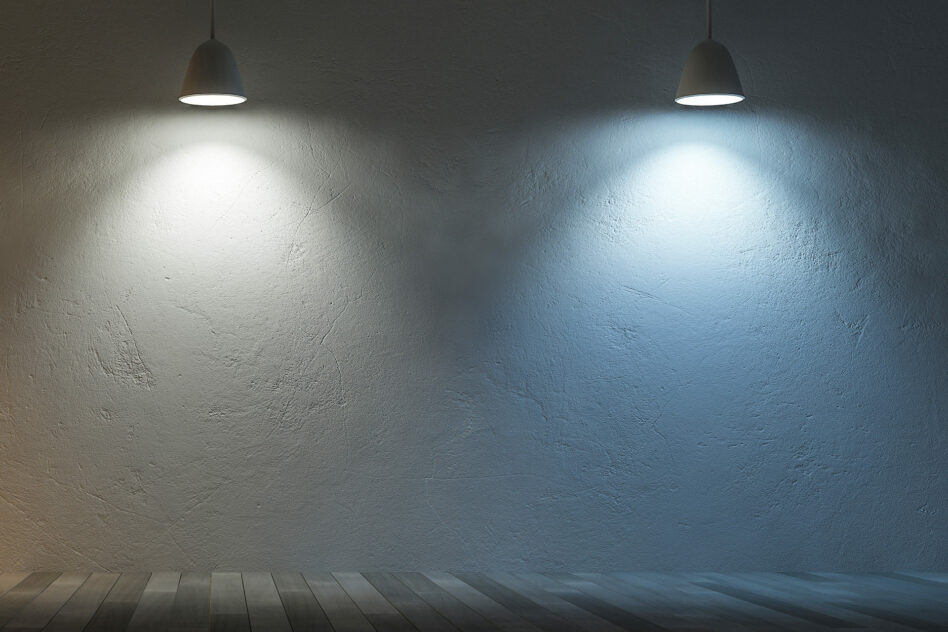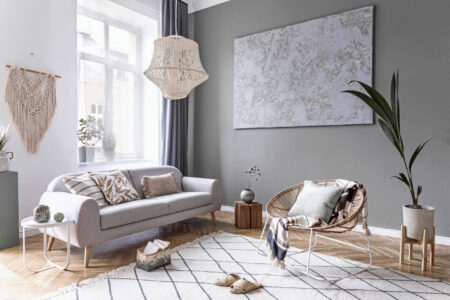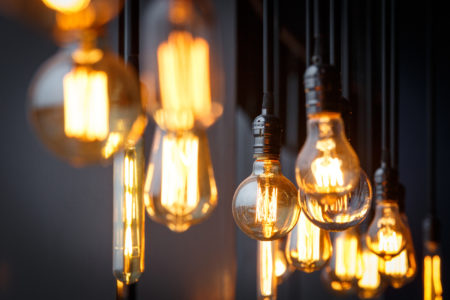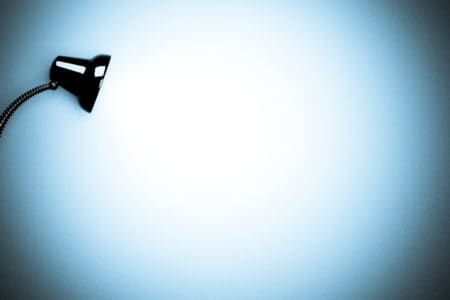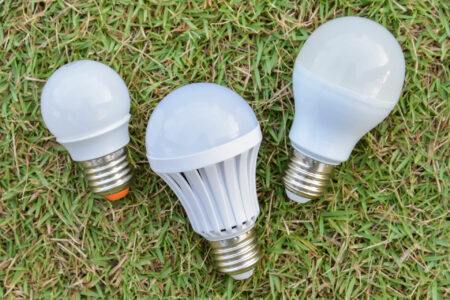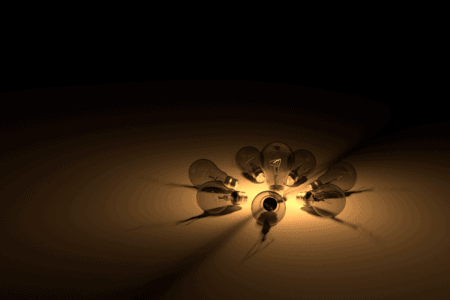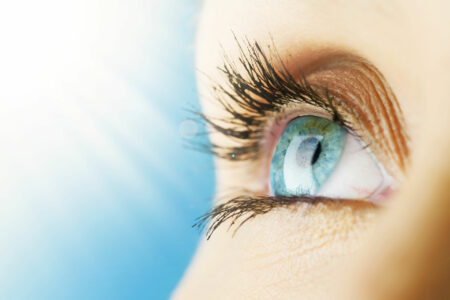Choosing the perfect type of light makes a space livable and functional. If you want to get alive in the morning or if you need to be highly concentrated for your work, the perfect choice could be bright white or daylight bulbs. Both options seem to be quite similar so let’s find out their differences.
3 Subtle Differences Between Bright White and Daylight Bulbs
Bright white and daylight bulbs are more similar than they’re different. A few technical differences affect the visual aspect of these lights to some extent.
Color Temperature: Kelvin Value
A brilliant way to quantify the quality of light is to measure its color temperature and give that a number. The scale goes from 1000 to 10,000 Kelvin, and it’s roughly divided into three main segments:
- Soft white light: 2700 K (2000–3500 K)
- Bright white light: 3000 K (3500–5000 K)
- Daylight: 5000 K (5000–6500 K)
The three types are effectively white light, but the lower ranges tend to be more orange, while the higher end becomes bluer. Natural daylight is closest to the 5000 K value, so the lamps with that rating are called daylight bulbs.
You can use color temperature to change the mood of any space. Soft white gives a warm laid back feel, while bright white is more businesslike. Daylight is energetic and mimics the way natural light feels. This includes reflecting colors and textures realistically.
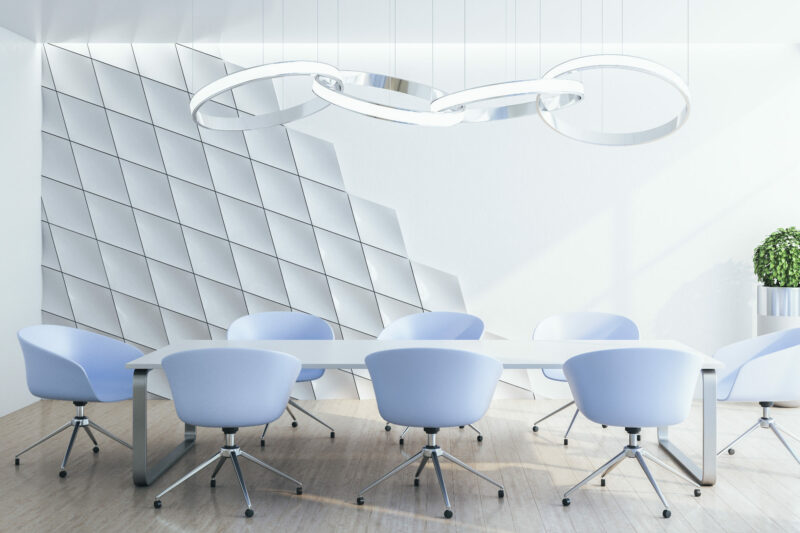
Level of Brightness: How Many Lumens?
This characteristic describes how bright or dim a room can be. A standard 100-watt light bulb produces approximately 1600 lumens when fully charged.
Commercially, both bright white and daylight bulbs are available in the 1500 lumens rating. Domestic usage often revolves around this value. However, such brightness would seem too ineffective in an industrial setting or open space. That’s why there are 10000-lumen varieties, but we often find these with daylight bulbs.
Another technical difference is the amount of brightness created at a specific power. A 100-Watt bright white lamp has a similar effect to a 40-Watt daylight lamp. That might incentivize some people to use lower-power daylight bulbs and get the same brightness in a room.
Light Appearance: The CRI Index
Have you ever noticed how your skin color “looks different” under fluorescent light than it does in a restaurant with soft yellow light?
That’s because the way the color reflects on a surface can modify the manner it appears to the human eye. Natural daylight is where we see colors as they are, without much distortion.
The color rendering index is a way to assess how far any type of light translates the colors of any surfaces or objects. The scale of CRI goes from 0–100, with the perfect score being the true rendering of colors, which is 100.
Daylight bulbs often have a higher CRI index than bright white lights, which is why we recommend using them in closets, dressing rooms, art workshops, and around vanities.
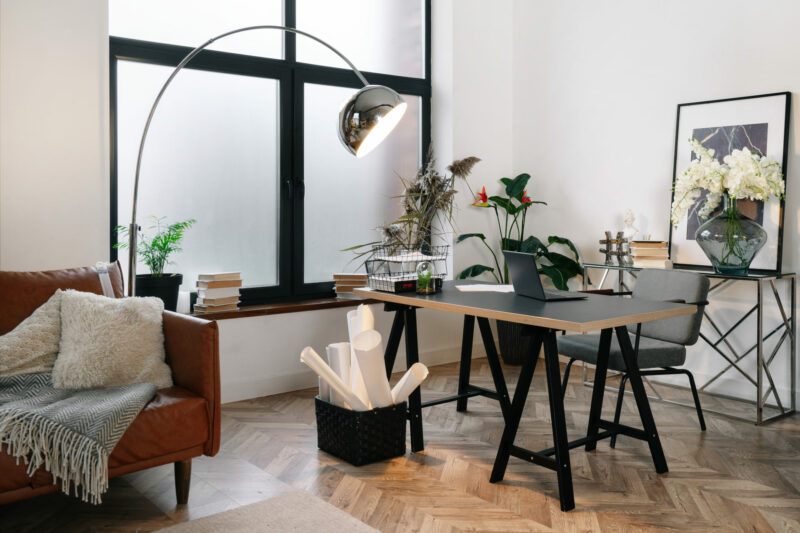
Typical Usage of Each Type of Light
Here’s an interesting fact: the color temperatures for bright white and daylight lamps have a common rating which is 5000 K. That’s because bright white lamps go from 3500–5000 K, and daylight lamps go from 5000–6500 K.
The moral of this little story is that they’re pretty close! If you need general lighting that’s bright and easy on the eye, then you can choose either type. There are some differences though that you can take advantage of.
Bright White Bulbs
Bright white is great at showing light and dark contrasts. This means better clarity and crisper markings. Reading a book, or even scrolling through your phone, would feel quite easy under this light.
The same applies to tasks needing accuracy, reading maps, drawing detailed diagrams, or doing office work in general.
Daylight Bulbs
Daylight is perfect for showing true colors. This is essential when fashion, styling, art, or culinary experiences are involved. It’s also nice in high-energy living spaces and feels like having fun outside on a sunny day!
Best Locations for Bright White and Daylight Bulbs
Plenty of people use bright white and daylight bulbs exchangeably, and that might not affect them terribly. Then again, using the right type of lighting in the right place has its perks.
Bright White Bulbs
The smallest details on a surface pop up amazingly under bright white light. Reading the fine print on a page, using a laptop to write an essay, or doing a DIY installation, are all much easier under this light.
Thus, the best locations for a bright white bulb are the following:
- Home office
- Den
- Patio
- Workshop
- Bookshelves
- Desks
- Gaming area
- Basement
- Service and utility spaces
Daylight Bulbs
The natural quality of light means that colors are reflected without much deterioration or modification. Thus, the clothes you wear, or the cosmetics you apply would ‘look’ real.
The same applies to food materials, where the degree of ripeness is best determined through color.
Various other tasks work better when the colors of different objects are realistic and true to nature.
Some of the typical locations for installing daylight bulbs include:
- Vanity
- Crafts room
- Kitchen
- Garage
- Bathroom
- Dressing room
Price and Energy Consumption
The prices of bright white and daylight bulbs are similar across the board. There are various power options in the market for each type and brand. And this would naturally show clear discrepancies in price ranges.
However, for each brand power rating, the prices of bright white and daylight bulbs wouldn’t be that different.
The same applies to power consumption. There are slight differences, but you can disregard them without affecting a household budget in a meaningful manner.
One factor might be worth considering here. Daylight bulbs appear brighter than bright white lights. Thus, you can use a 40-Watt daylight bulb, and it would give the same output as a 100-Watt bright white light bulb. In large facilities, this could add up to nice savings on energy consumption.
Mixing and Matching Light Bulbs
Each type of lighting provides a unique set of features that are often well-suited to a specific task. For example, hard light is preferable in places where accuracy is needed. And contrary to that, soft light is much better in living areas.
There are times when people use a room for multiple purposes. A living room can also serve as a home office or crafts area. In that case, mixing natural and crisp lights would be beneficial.
Daylight bulbs are great as task lights for the crafting area. The colors are rendered naturally as they would out in the sun. Bright white lights make writing, typing, or reading much easier. They give clarity and a sharp contrast to the lighted surfaces.
These lights also provide interesting accents, especially when lampshades are added. Installing a combination of these bulbs should cover your basic activities and fit your lifestyle well.
Which Bulb Is Right for You?
In domestic settings, there isn’t a world of differences between bright white and daylight bulbs. They’re both powerful lights that serve well as task lights and provide plenty of illumination in any room. The typical brightness for both is around 1500 lumens.
Industrial settings favor daylight bulbs more, and it’s normal to find bulbs with a brightness of 10,000 at hardware stores.
Comparing bright white and daylight bulbs might not be a drastic matter. Most people can’t tell them apart. The quality of such light becomes clearer if compared with soft white light. This is where the crispness of bright white light, and the natural feel of daylight, become obvious.
